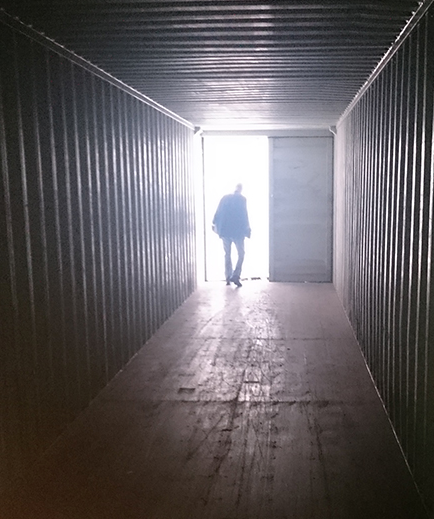Getting inside a container
- Objectives
- Getting a shell
- Not getting a shell
- Viewing container processes from the host
- What's the difference between a container process and a host process?
- Getting a shell in a running container
- Caveats
- Getting a shell in a stopped container
- Analyzing a stopped container
- Viewing filesystem changes
- Accessing files
- Exploring a crashed container
- Obtaining a complete dump

Objectives
On a traditional server or VM, we sometimes need to:
log into the machine (with SSH or on the console),
analyze the disks (by removing them or rebooting with a rescue system).
In this chapter, we will see how to do that with containers.
Getting a shell
Every once in a while, we want to log into a machine.
In an perfect world, this shouldn't be necessary.
You need to install or update packages (and their configuration)?
Use configuration management. (e.g. Ansible, Chef, Puppet, Salt...)
You need to view logs and metrics?
Collect and access them through a centralized platform.
In the real world, though ... we often need shell access!
Not getting a shell
Even without a perfect deployment system, we can do many operations without getting a shell.
Installing packages can (and should) be done in the container image.
Configuration can be done at the image level, or when the container starts.
Dynamic configuration can be stored in a volume (shared with another container).
Logs written to stdout are automatically collected by the Docker Engine.
Other logs can be written to a shared volume.
Process information and metrics are visible from the host.
Let's save logging, volumes ... for later, but let's have a look at process information!
Viewing container processes from the host
If you run Docker on Linux, container processes are visible on the host.
$ ps faux | less
Scroll around the output of this command.
You should see the
jpetazzo/clockcontainer.A containerized process is just like any other process on the host.
We can use tools like
lsof,strace,gdb... To analyze them.
What's the difference between a container process and a host process?
Each process (containerized or not) belongs to namespaces and cgroups.
The namespaces and cgroups determine what a process can "see" and "do".
Analogy: each process (containerized or not) runs with a specific UID (user ID).
UID=0 is root, and has elevated privileges. Other UIDs are normal users.
We will give more details about namespaces and cgroups later.
Getting a shell in a running container
Sometimes, we need to get a shell anyway.
We could run some SSH server in the container ...
But it is easier to use
docker exec.
$ docker exec -ti ticktock sh
This creates a new process (running
sh) inside the container.This can also be done "manually" with the tool
nsenter.
Caveats
The tool that you want to run needs to exist in the container.
Some tools (like
ip netns exec) let you attach to one namespace at a time.(This lets you e.g. setup network interfaces, even if you don't have
ifconfigoripin the container.)Most importantly: the container needs to be running.
What if the container is stopped or crashed?
Getting a shell in a stopped container
A stopped container is only storage (like a disk drive).
We cannot SSH into a disk drive or USB stick!
We need to connect the disk to a running machine.
How does that translate into the container world?
Analyzing a stopped container
As an exercise, we are going to try to find out what's wrong with jpetazzo/crashtest.
docker run jpetazzo/crashtest
The container starts, but then stops immediately, without any output.
What would MacGyver™ do?
First, let's check the status of that container.
docker ps -l
Viewing filesystem changes
- We can use
docker diffto see files that were added / changed / removed.
docker diff <container_id>
The container ID was shown by
docker ps -l.We can also see it with
docker ps -lq.The output of
docker diffshows some interesting log files!
Accessing files
- We can extract files with
docker cp.
docker cp <container_id>:/var/log/nginx/error.log .
- Then we can look at that log file.
cat error.log
(The directory /run/nginx doesn't exist.)
Exploring a crashed container
We can restart a container with
docker start...... But it will probably crash again immediately!
We cannot specify a different program to run with
docker startBut we can create a new image from the crashed container
docker commit <container_id> debugimage
- Then we can run a new container from that image, with a custom entrypoint
docker run -ti --entrypoint sh debugimage
Obtaining a complete dump
We can also dump the entire filesystem of a container.
This is done with
docker export.It generates a tar archive.
docker export <container_id> | tar tv
This will give a detailed listing of the content of the container.